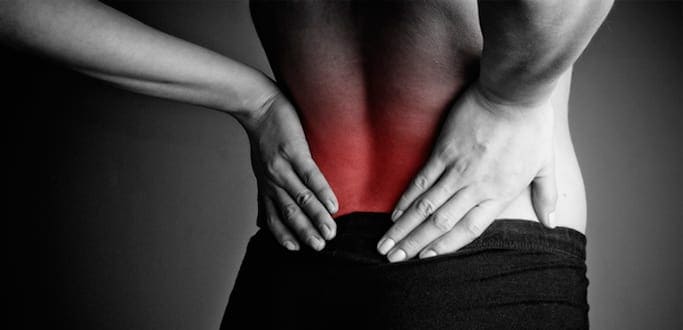Low back pain is extremely common, both in the US and worldwide. The Global Burden of Disease 2010 report cites back pain as the leading cause of disability worldwide, and the American Chiropractic Association reports that back pain is one of the most common excuses for work absenteeism in the US, and is the second most common reason for doctor visits, second only to upper respiratory infections.
Due to its ubiquitous prevalence, there is little wonder that there are multiple treatment options for low back pain, ranging from pain medication to full blown surgery. However, most treatments focus on managing pain and treating the area of discomfort, but fail to address the root cause of back pain. Back pain can have a number of causes, and the source could originate from issues occurring far from the site of pain.
Some common causes of low back pain include:
- Poor postural habits
- Weak and/or tight muscles
- Faulty movement mechanics
- Repetitive overuse of muscles
- Sitting for long hours
- Sedentary lifestyle
- Weak core muscles
- Trauma
Understandably, addressing pain is often the first course of action in back pain treatment, since that is why patients go for help in the first place. However, pain management should not be the only goal of treatment. Effective treatment that resolves back pain in the long run involves identifying the source of pain and correcting the root cause.
Conservative non-surgical treatment options frequently include:
- Pain medications ranging from over-the-counter NSAIDs to prescription pain killers and muscle relaxants.
- Heat and/or ice to reduce inflammation and relieve pain.
- Chiropractic manipulation to take pressure off nerves
- Therapeutic massage to relax muscles and increase blood flow
- Physical therapy to stretch and strengthen muscles
While popular treatment options may temporarily alleviate pain, they often fall short of eliminating the source of the problem, and you may find your back pain returning not long after treatment.
To get to the source of your low back pain and eradicate it, seek treatment from practitioners who understand the importance of movement mechanics, and who realize that pain often originates from neurodynamics, the interactions between muscles and nerves. A holistic back pain specialist will do a thorough analysis of posture, movement, gait and lifestyle habits, supported by MRI or ultrasonography, and will design a treatment protocol to correct deficiencies.
When looking for a back pain specialist, ask the following questions:
1.What will the examination entail?
An effective diagnosis depends on multiple factors, and your back pain specialist should be willing to explore all pathways that lead to resolution. This may include computerized gait analysis, postural analysis, assessment of strength and range of motion, a thorough review of daily activities and lifestyle factors, a comprehensive health history review, MRI, ultrasonography, and other diagnostic approaches geared to getting at the source of your pain.
2.What is your approach to treatment?
In a holistic approach, treatment is often multimodal. While any practitioner is likely to address pain and inflammation early on, treatment should not stop there. If medication, rest and cold therapy constitute the entire treatment protocol short of surgery, you should probably look elsewhere.
3.What treatment options do you normally recommend?
Treatment should be individualized, and may involve a combination of strategies such as acupuncture, physical therapy, massage, chiropractic manipulation, therapeutic Pilates exercises, shock wave therapy, computerized gait retraining, and sometimes other innovative therapies such at Vojta, DNS, Redcord therapy, and more.
NYDNRehab is the place to go for back pain in NYC. Our back pain specialists have access to the most cutting edge technologies for diagnosis and treatment, all under one roof. Our team of professionals will work together to ensure you receive the very best treatment available for your back pain.
At NYDNRehab, we are dedicated to getting at the source of your back problem, not just treating the symptoms. Our skilled therapists know how to accurately assess and diagnose your back pain, and create individualized solutions for treatment. With the latest technologies and methods at our fingertips, NYDNRehab is fully equipped to treat your back pain at its source, so you can return to your active lifestyle.























































